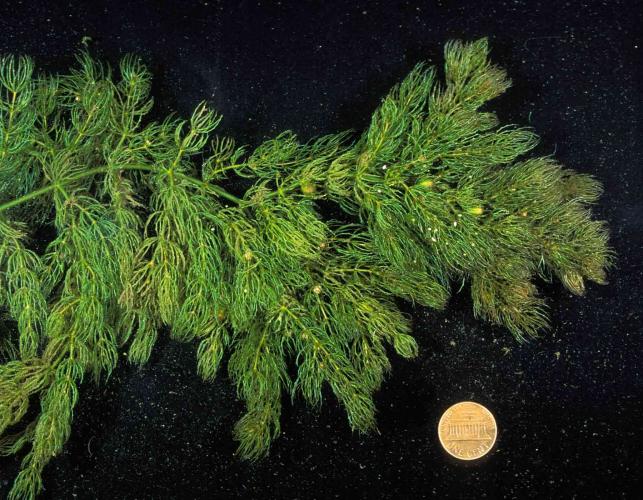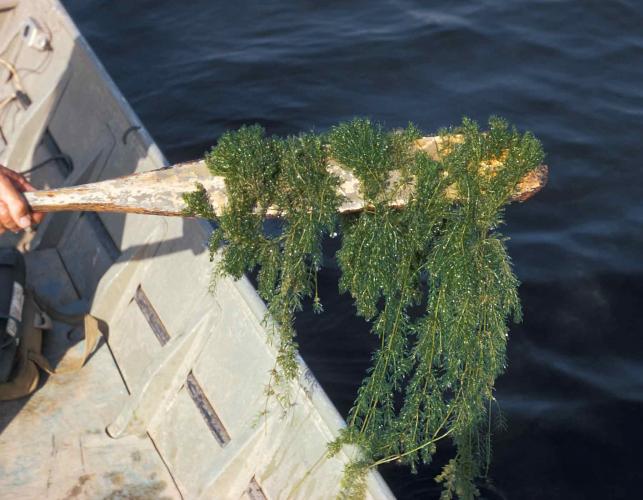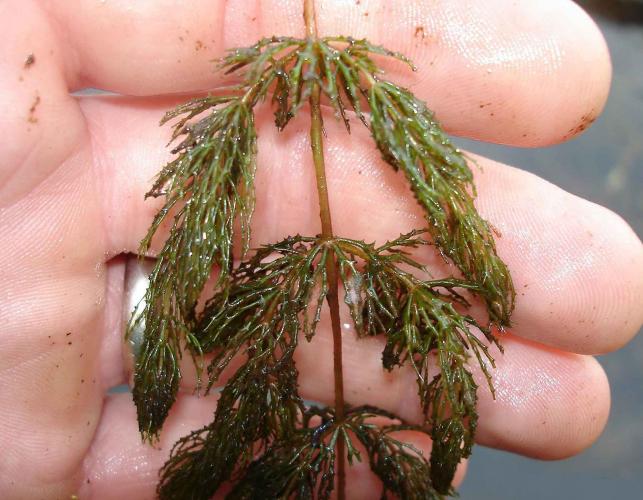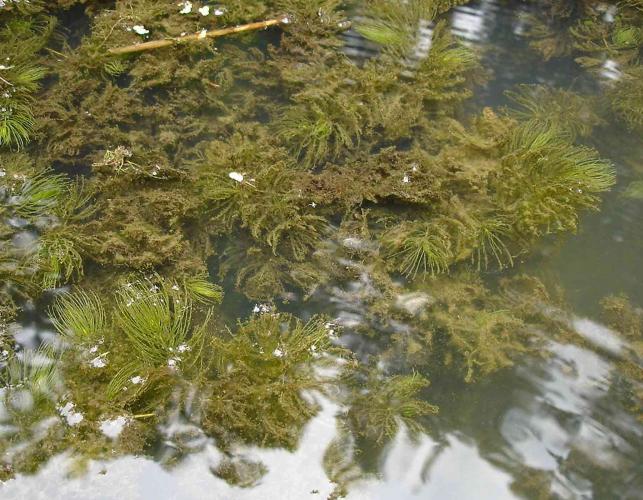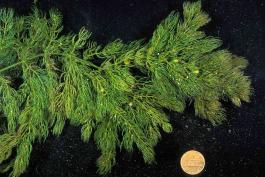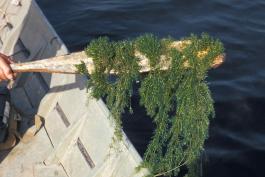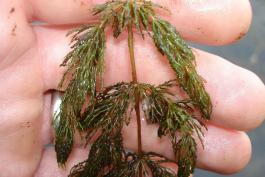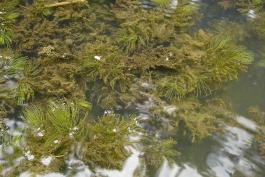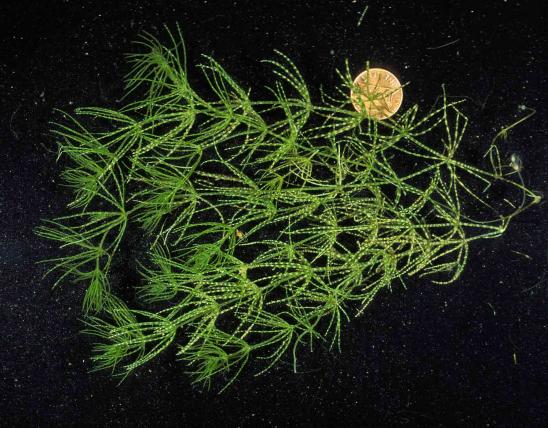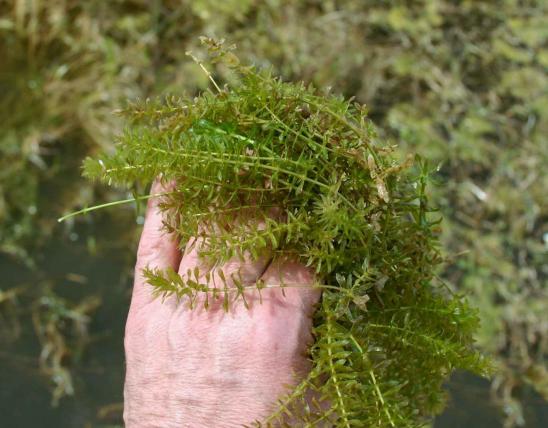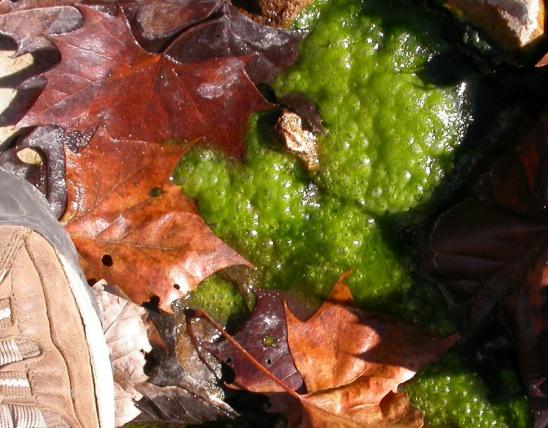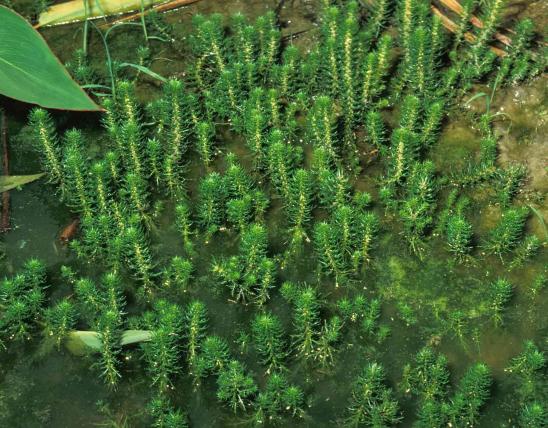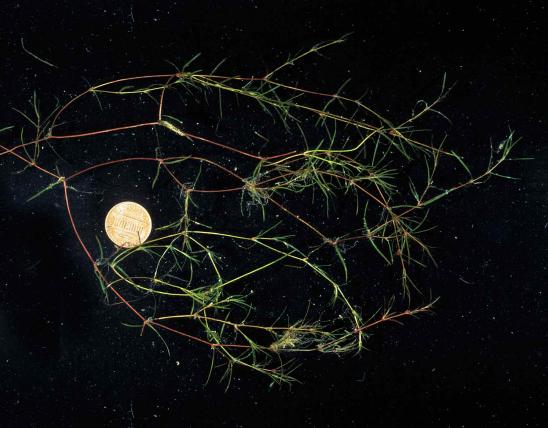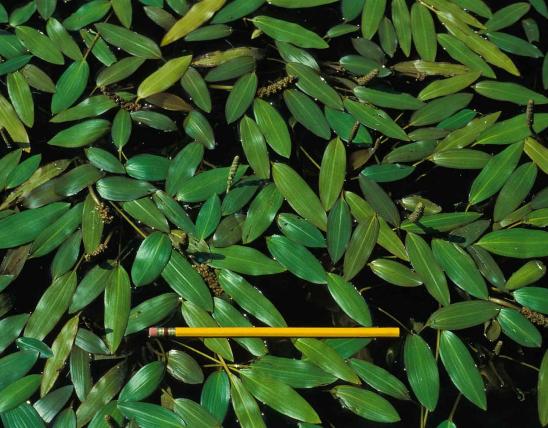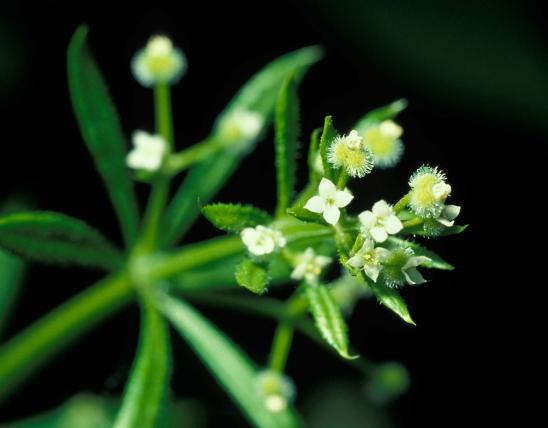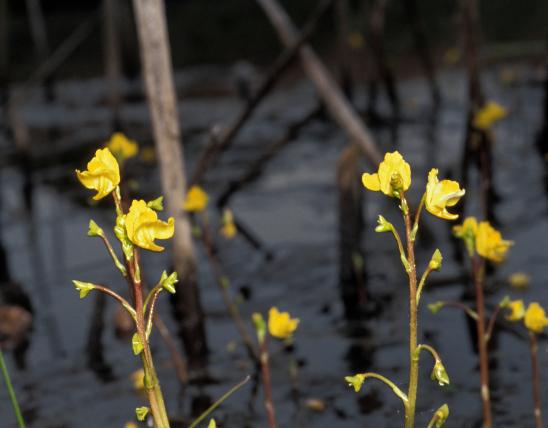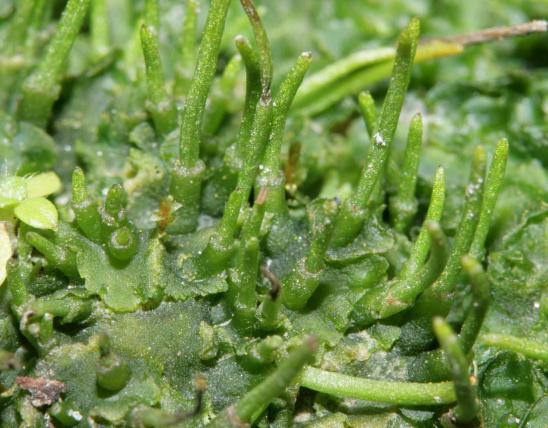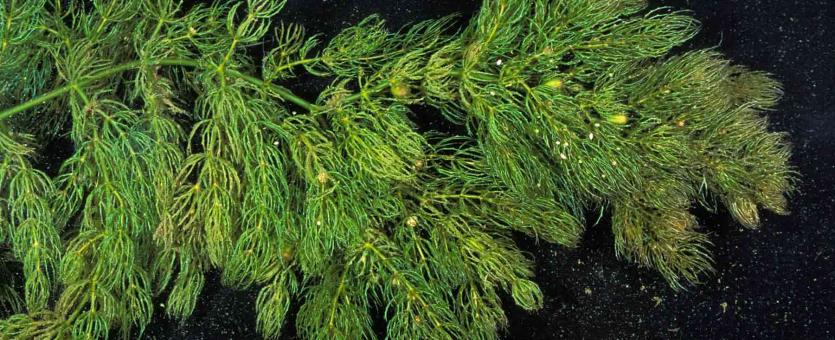
Coontail is rooted to the bottom but sometimes forms large, tangled masses that float freely in the water. The stems can be several feet long, with much branching. The leaves are grouped in whorls around the stems, and each leaf is needlelike, forked once or twice, and covered with small thorny projections. Coontail is usually completely underwater and feels stiff and brittle. Inconspicuous, greenish brown male and female flowers arise separately on the same plant.
Similar species: Several other aquatic plants have narrow leaves that resemble coontail. Coontail is distinguished by its needlelike leaves that are forked only once or twice and have thorny projections.
Length: stems to 6 feet or more.
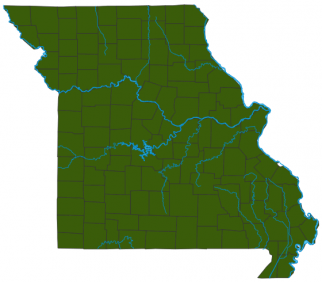
Statewide.
Habitat and Conservation
A submerged aquatic plant that usually grows in calm water, often well out from the shore in water several feet deep. Native to North America, coontail has been introduced nearly worldwide and has become an invasive weed in several places. With its fast growth, it can outcompete other, native plants. It also produces chemicals that suppress the growth of several types of microscopic plants.
Control
Human Connections
This species, under the name of hornwort, is a popular aquatic plant sold in pet stores. In an aquarium it is attractive, hardy, and needn’t be rooted, and it can provide dense, floating cover for shy fish, spawning fish, and fry. But in ponds and lakes, it can multiply and become a nuisance plant.
Ecosystem Connections
Like other aquatic plants, coontail provides shelter for innumerable aquatic animals, from tiny daphnia to lunker bass, and all the food-chain links in between. When coontail grows too abundantly, it is often a result of excessive nutrients (fertilizer, farm runoff, etc.) entering the water.
